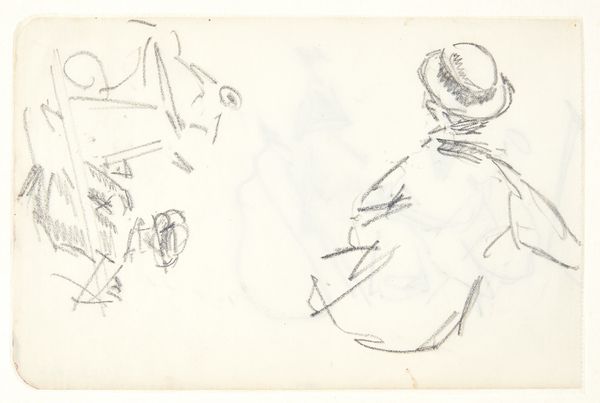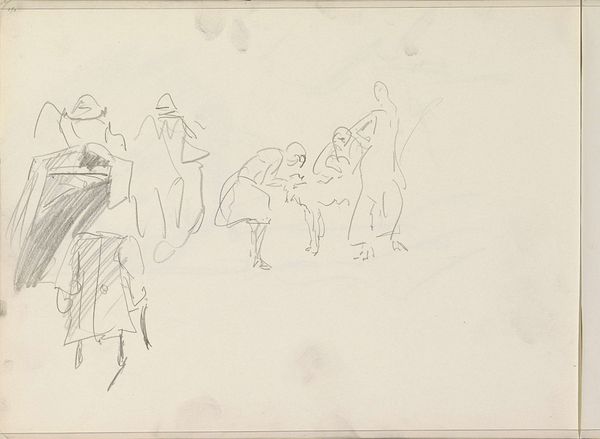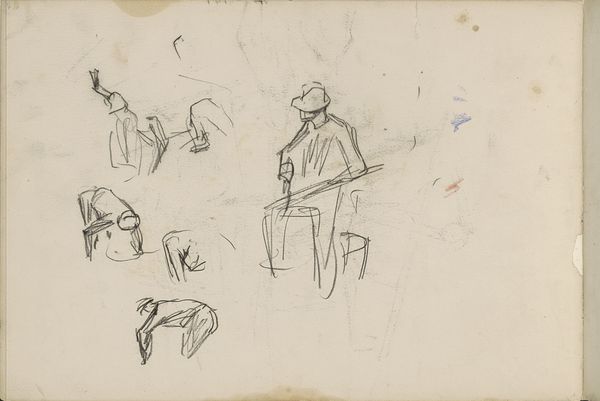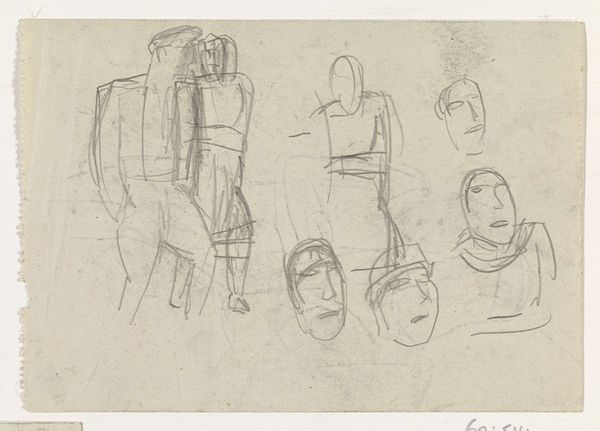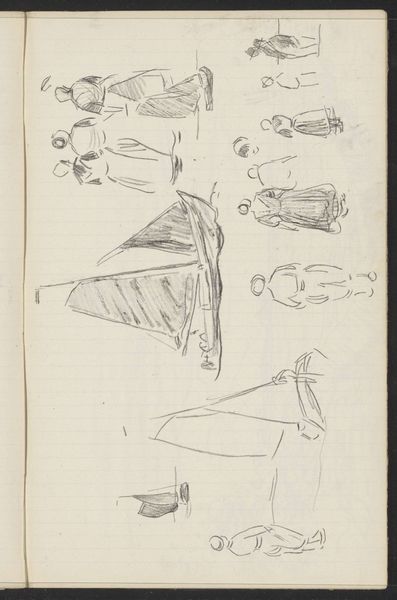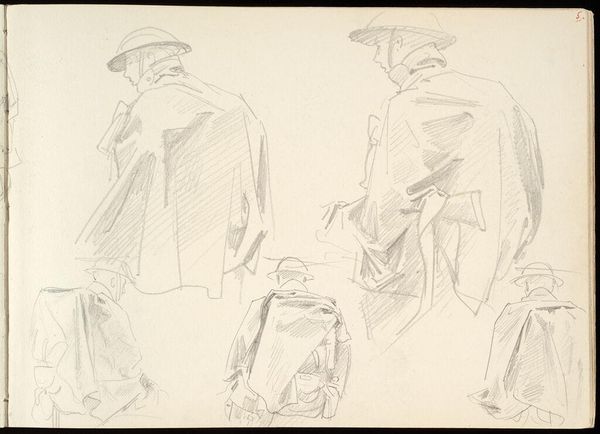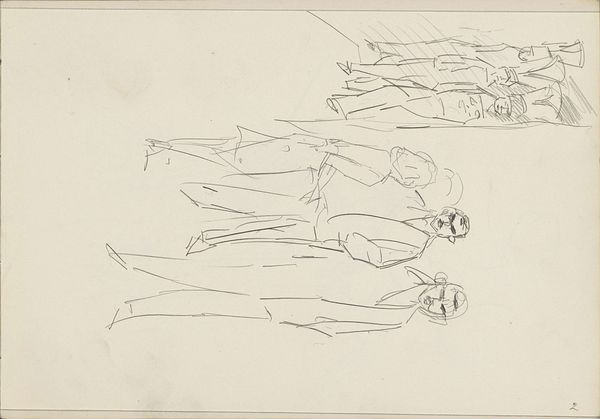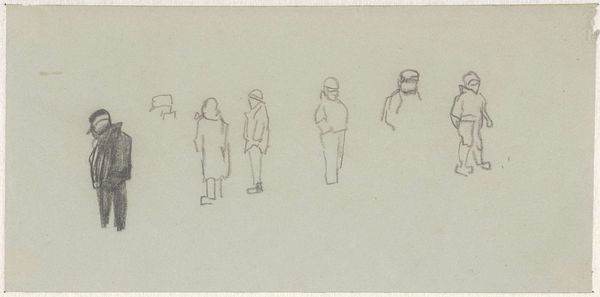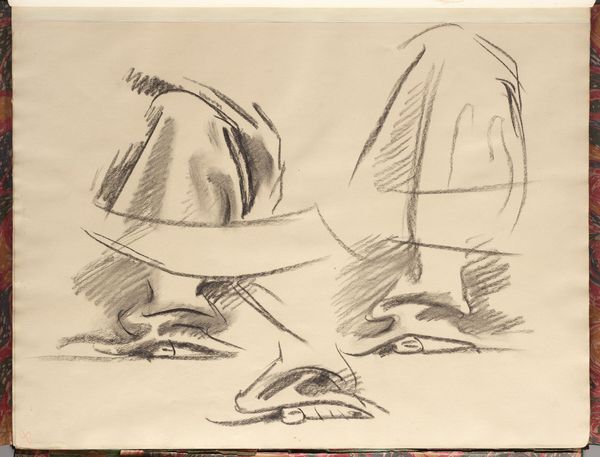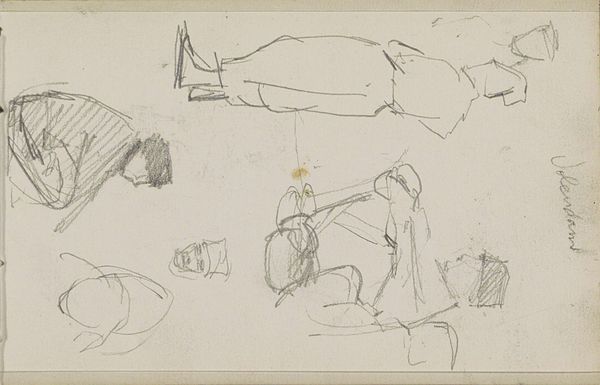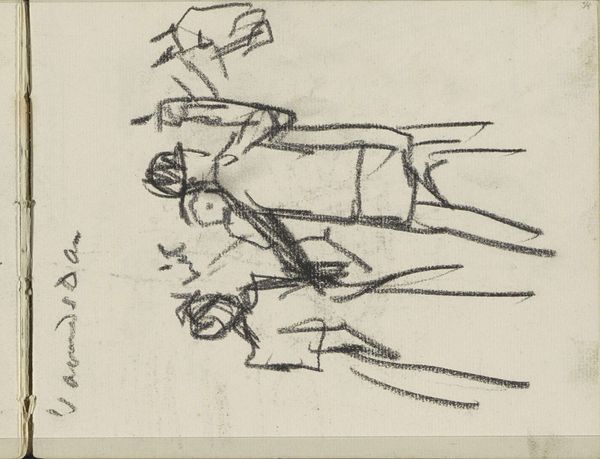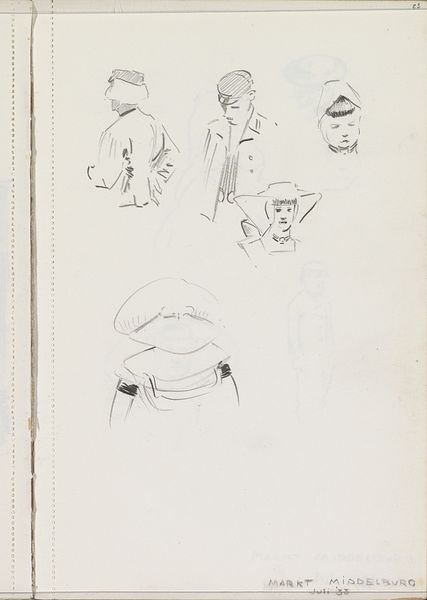
Dimensions: height 90 mm, width 151 mm
Copyright: Rijks Museum: Open Domain
Editor: Here we have Leo Gestel's pencil drawing, "Wielerwedstrijd," placing us somewhere between 1891 and 1941. It's at the Rijksmuseum. It feels like a collection of fleeting moments captured on paper, figures and banners sketched rapidly. What do you see in this piece? Curator: The beauty of sketches lies in their direct connection to the artist's thought process. I see a cultural event – a cycling race, as the title suggests – not just as a sporting contest, but as a symbolic arena. Cycling itself, think of its rise in popularity during this period. Did it represent modernity, freedom, even national progress? Editor: That’s interesting, the modernity aspect. So, you're saying the cycling race is not just a race? Curator: Exactly. Consider the figures, they're archetypes, more than individuals. The spectators, are they merely observing, or are they invested in something larger – perhaps national pride, social identity, or the thrill of technological advancement? Editor: So the ‘W’ and ‘R’ markings would reinforce this? It’s a bit like shorthand for something. Curator: Precisely. Perhaps it is a cycling club insignia. A clue. Ask yourself what did belonging mean at that moment in history? This image becomes a window into that world. Editor: That's a lot to unpack from a simple sketch. Curator: Yes. And the speed of the sketch, its incompleteness. It encourages us to fill in the blanks with our own cultural understanding and to realize how the symbols may have transformed over time, or stayed constant. It’s the beauty of images, isn't it? Editor: It is, seeing all these potential layers is amazing! Thanks!
Comments
No comments
Be the first to comment and join the conversation on the ultimate creative platform.

